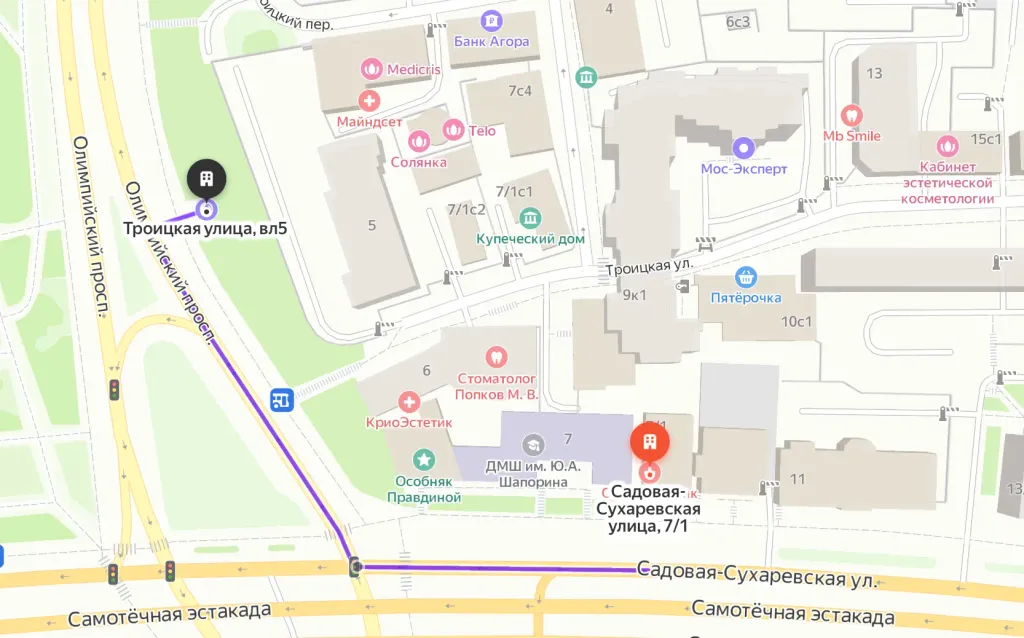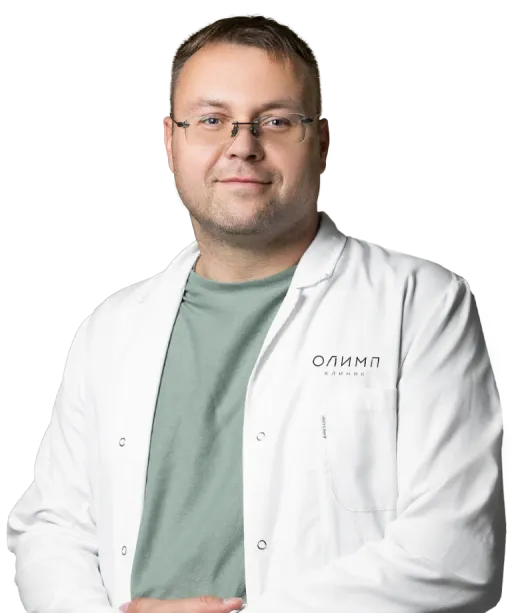Nonspecific ulcerative colitis diagnostics and treatment (NUC)
A comprehensive approach to NUC diagnostics and treatment to control inflammation and achieve remission.

Nonspecific ulcerative colitis (NUC) is a chronic inflammatory disease of the mucous membrane of the large intestine. NUC alternates between flare-ups and remissions. The disease causes pain, diarrhea, and bloody stools.
There are many possible causes of NUC, including a family history of the disease, immune system disorders, infections, and environmental factors. The disease can cause different symptoms, from small, specific areas of damage to large, widespread inflammation, which can lead to severe pain, dehydration, and weight loss. Treatment aims to reduce inflammation, heal ulcers, and restore normal bowel function. This can be done with medications, a special diet, and, if necessary, surgery.
NUC diagnostics involves instrumental and laboratory procedures. The main way to diagnose it is with a colonoscopy that includes a biopsy. This allows for a visual check of the intestinal mucosa and helps determine the type of inflammation present. Other tests, like rectoromanoscopy, radiography, or stool analysis, help confirm the diagnosis and rule out other diseases, like Crohn's disease or intestinal infections.
At first, the disease is treated without the patient staying overnight at the medical center. The patient is prescribed drugs that reduce swelling, ease pain, and stop diarrhea. For more serious cases, the patient is treated in the hospital. The patient may be prescribed intravenous nutrient therapy to unload the intestine, and if necessary, surgical removal of the affected part of the intestine.
After surgery, patients need time to recover. The recovery period can be as short as two weeks or as long as four months, depending on how complicated the surgery was.
Benefits
An integrated approach
It helps to control inflammation and prevent complications.
Modern methods
Colonoscopy with biopsy and other examinations ensure accurate diagnosis.
An effective therapy
Treatment helps to achieve remission even in severe cases.
Improving the quality of life
Treatment reduces the frequency of exacerbations and restores intestinal function.
Diagnostics
The diagnosis of NAC includes instrumental and laboratory methods. The main diagnostic method is a colonoscopy with a biopsy, which allows you to visually assess the intestinal mucosa and determine the nature of the inflammation. Additional examinations, such as rectoromanoscopy, X-ray, or stool analysis, help clarify the diagnosis and rule out other diseases such as Crohn's disease or intestinal infections.

Treatment
In the initial stages, the disease is treated on an outpatient basis. The patient is prescribed anti-inflammatory drugs, painkillers and antidiarrheal medications. In severe cases, treatment is carried out in a hospital. The patient may be prescribed intravenous nutrient therapy to relieve intestinal congestion, and, if necessary, surgical removal of the affected part of the intestine.

Recovery
After surgical treatment, the patient needs time to recover. The rehabilitation period can take from 2 weeks to 4 months, depending on the complexity of the operation.

Specialists
Find a SpecialistA coloproctologist, a surgeon.
Similar referral activities
Crohn's disease diagnostics and treatment
Eliminating inflammation, preventing complications, and ensuring long-term remission in Crohn's disease.
Hemorrhoid diagnostics and treatment
Effective solution to hemorrhoids: from nonsurgical treatment to minimally invasive and surgical procedures.
Coloproctologist consultation
Appointment with a coloproctologist to diagnose, treat and prevent diseases of the rectum, anal canal and colon.
How to reach
How to get
From the Belorusskaya metro station of the Zamoskvoretskaya line - exit 4 After exiting the subway, walk through the pedestrian tunnel and climb the stairs. Move towards the railway tracks, go down the stairs immediately after them and walk along the house, then turn right onto 1st Yamskoye Pole Street. At the turn to 3rd Yamsky Pole Street, cross the road at the pedestrian crossing and continue along 1st Yamsky Field Street, after a few buildings on the left you will see Olympus Clinic MARS.
Travel time
9 minutes
Landmark
Olympus Clinic MARS sign
How to get
From the Belorusskaya metro station of the Ring line - exit 2. After exiting the subway, turn left and walk to the pedestrian crossing. Cross the road through two pedestrian crossings and move along the Tverskoy overpass. Go down the stairs immediately after the railway tracks, walk along the house, then turn right onto 1st Yamskoye Pole Street. At the turn to 3rd Yamsky Pole Street, cross the road at the pedestrian crossing and continue along 1st Yamsky Field Street, after a few buildings on the left you will see Olympus Clinic MARS
Travel time
11 minutes
Landmark
Olympus Clinic MARS sign
From the metro station "Tsvetnoy Bulvar"
1 exit to the city, then left to the Garden Ring, at the crossing to the right, crossing the boulevard, one more crossing and at the traffic light to the left. The Olymp Clinic building is located overlooking the Garden Ring to the right of the crossing. Travel time is approximately 9 minutes. Landmark - sign Olymp Clini
From the metro station "Sukharevskaya"
Exit 3 from the metro and 640 meters straight ahead, the clinic will be on the right. Landmark - sign Olymp Clinic
Parking lot map
Exit 3 from the metro and 640 meters straight ahead, the clinic will be on the right. Landmark - sign Olymp Clinic

From Sokol metro station
The last car from the center: follow the signs for Exit 5. From the glass doors to the right and go to the end of the passage. Exit to the city by the steps to the left. After exiting the crossing to the street, go straight along Leningradsky Prospekt to the intersection with Chapaevsky Lane. Next, turn right (onto Chapaevsky Lane) and walk to the Triumph Palace residential complex. Entrance to the territory: through checkpoint No. 1, opposite the Vkusville store, you will need to present your passport. After passing through the checkpoint, go up the stairs to the fountain, opposite it you will see our clinic.
Travel time
10-12 minutes
From the Airport metro station
The first car from the center: follow the Exit 2-3 signs. Turn left out of the glass doors and walk to the end of the passage. After exiting the crossing to the street, go straight along Leningradsky Prospekt to the intersection with Chapaevsky Lane. Next, turn left (onto Chapaevsky Lane) and walk to the Triumph Palace residential complex. Entrance to the territory: through checkpoint No. 1, opposite the Vkusville store, you will need to present your passport. After passing through the checkpoint, go up the stairs to the fountain, opposite it you will see our clinic.
Travel time
12-15 minutes
How to get
Entry to the territory is prohibited, but there are free city parking lots around the Triumph Palace residential complex, where you can easily find a place for your car. Free parking area:




